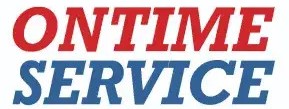When your furnace starts developing problems, it can be tempting to want to fix it yourself. After all, sometimes it is as simple as flipping the breaker, lighting the pilot, or replacing the filter. When things get more complicated, however, it can be extremely dangerous to make repairs yourself.
To help prevent repairs in the first place, it’s important to have your furnace tuned up by a professional every fall, before you first turn on the system and begin using it consistently through the winter months. When you do have a major repair, always call a professional HVAC technician.
When it comes to electrical, plumbing, and HVAC, it’s usually best to call the professionals. DIY repair can lead to voided manufacturer warranties, compromised insurance claims, and some repairs are even illegal!
Do-Not-Do-It-Yourself Furnace Repair
Listed below, we’ve compiled the biggest disasters and dangers to DIY Furnace repair. OnTime Service is always on the line; give us a call with any questions about your furnace woes. We’ll let you know whether your repair is a DIY, or one you shouldn’t dare tackle alone!
Carbon Monoxide Poisoning
Carbon monoxide is a colorless and odorless gas, making it nearly impossible to detect except by means of a carbon monoxide detector. Any fuel-burning process produces carbon monoxide, and can cause serious health effects, and in severe cases, death. If you have a problem with your furnace, you may be leaking unhealthy levels of carbon monoxide into the home. This sometimes occurs with cracked heat exchangers.
Make sure you are testing your smoke and CO alarms every 30 days and replacing them after 10 years, or whenever the manufacturer states. It’s also highly recommended that you schedule furnace maintenance every year, preferably in the fall before you first turn on the heater. Natural gas heating systems not only produce carbon monoxide; they are also potential fire hazards.

Source: cdc.gov
Click here for more carbon monoxide tips from the Centers for Disease Control and Prevention.
Fire
Where there is high heat energy, there is a risk of fire. No matter what kind of heating system you have, it has the potential to cause a fire. Sometimes, faulty wiring can cause a fire, which is why you want to have an annual electrical safety inspection. When you have electrical equipment mixed with highly flammable fuel, you want to be extra careful.
Don’t mess with any gas lines, electrical wiring, or any other dangerous utility unless you are fully trained to do so. This training takes years, so we recommend you leave it to the professionals.
If you smell gas in your house:
Evacuate the household and all pets immediately. Make sure you are a safe distance away.
Do NOT use cell phones, electrical equipment, open flames, or any other source of ignition!
Call the local gas company and the fire department after everyone has evacuated.
Big Repairs
Many home heating problems can be avoided with the proper maintenance. Have a professional inspect your system every year (make sure a full cleaning is included), change your air filters regularly, and clean and clear the area around your indoor and outdoor units.
Refrigerant Leaks
If you have a heat pump, you are relying on refrigerant for both heating and cooling. Refrigerant leaks are dangerous, causing dizziness, asphyxia, and other respiratory problems. Air conditioning and heating maintenance calls for a licensed professional who has undergone a rigorous training and certification process. Plus, a manufacturer may void your warranty if you, a homeowner without appropriate licensing, were to work on the system.
By catching small issues early, it’s easy to avoid big repairs. Sometimes little DIY projects turn into expensive repairs if done incorrectly. Other times, DIY furnace repair can save you money, energy, and inconvenience.
Things You CAN Do Yourself:
- Remove the combustion chamber door
- Inspect the burner flames
- Vacuum out the burner and blower cavities
- Change the furnace filter
- Blow dust off the pilot
- Clean the flame sensor
- Seal leaky air ducts
- Light a pilot light
- Fix a broken thermostat
- Unblock all vents and registers
You also want to make sure that your furnace is getting power (check for blown fuses and tripped circuit breakers) and your thermostat is set to heat and at a higher temperature than the current room temperature.
Watch this video to learn how to replace your furnace filter:
If you have checked off all of the basics and the furnace still isn’t working, give OnTime Service a call at (205) 872-1944 .
We work an ALL makes and models of HVAC units and arrive in a fully stocked truck for fast and easy repairs.
SERVICE ON TIME OR WE PAY YOU $59!
Give OnTime Service a call to schedule your annual heating inspection at (205) 872-1944 .
Our experienced team of technicians is fully trained to handle any heating system. As always, we will troubleshoot your home and give you straightforward pricing options before any work begins.
Follow us on social media for more useful information for your home: Facebook, Twitter, Google+, and Pinterest.
